After four solid years (the Trump / Pompeo years) of beating the war-drums against China, and a fever-pitch of anti-China propaganda, along with Taiwanese nationalists clamoring for a War on Taiwanese soil (to be defended by the United States), and the Australian (Morrison) government demanding that Australia fight China with every effort…
…it all came to a screeching end.
Why?
Did they all come to their senses? Did they realize that any war with China will be a war that is unwinnable? Did they finally realize that starting a nuclear war will hurt their chances of reelection? What is going on?
Here’s a number of articles that might provide some insight.
The first article is a an American neocon publication. It essentially says that... [1] Any war with China will be conventional. [2] That it will be fought either inside of China or in the neighboring lands next to China. [3] That American military cannot fight it at this time. It needs from five to ten years to prepare. [4] Preparation will require an enormous outlay of cash. [6] The cash would be used to upgrade the forces and weapons to "take on China". [7] And in five to ten years, the United States would be much stronger politically, militarily, socially, and culturally and thus a war would be welcomed by the American people. [8] That the USA and it's allies will take on China, who will stand alone without any neighbor support.
I call bullshit on all these thoughts.
Well, for one thing, a war with China has been fought using Weapons of Mass destruction since 2016 when John Bolton launched the carpet bombing of China with Bio-weapons, and the BRI was attacked with a micro-nuke in Beirut by America using Israel by proxy.
So keeping the war conventional is off the table.
And the idea that American allies will want to battle China, their neighbor, is also a “pipe dream”. An the USA will not be fighting China alone. They will be fighting both China and Russia who share military treaties, and who have staff in both military headquarters.
I also must say that the “big elephant in the room” is completely and totally omitted from this dialog. Which is, of course, that China has forcefully and clearly stated (over and over again) that any attack on China; it’s people, it’s territories, and it’s borders will be considered an act of war, and will be responded to with the HARSHEST and MOST DANGEROUS MEANS available. And that means nuclear weapons.
Which is why China is now mass producing unstoppable MIRV warhead hyper-velocity ICBMs, with artificial Intelligence, and which are designed to blast America cities into glass and debris.
But, you know, just ignore the warnings… right?
But you do need to get into the minds of these people. And notice what they omit from their calculus, the assumptions that they make, and the published reactions to their madness on their internet platforms.
[1] Gradually and Then Suddenly: Explaining the Navy’s Strategic Bankruptcy
“How did this happen to a force that, as recently as two decades ago, dominated the world’s oceans to a degree perhaps unequalled in human history?”
Empire Woes
11 https://anti-empire.com/gradually-and-then-suddenly-explaining-the-navys-strategic-bankruptcy/
The U.S. Navy is on the verge of strategic bankruptcy. Its fleet isn’t large enough to meet global day-to-day demands for naval forces. Due to repeated deployments and maintenance backlogs, the fleet also isn’t ready enough to meet these demands safely, nor can it quickly surge in an emergency. Finally, the fleet isn’t capable enough to meet the challenges posed by China’s increasingly modern and aggressive People’s Liberation Army Navy. How did this happen to a force that, as recently as two decades ago, dominated the world’s oceans to a degree perhaps unequalled in human history?
The answer is gradually and then suddenly.
Myriad authors have responded to the Biden administration’s Fiscal Year 2022 defense budget request with a mix of confusion and consternation. Critics have directed their ire, in particular, at the budget’s treatment of the Navy, given the administration’s purported focus on China as a strategic competitor. However, the issues noted by critics aren’t limited to this budget, but reflect a persistent trend since at least the FY2019 request, which was the first defense budget request to prioritize China as a strategic competitor. Despite the need for “urgent change at significant scale” to meet the Chinese military challenge, the last four budget requests have offered only measured change at moderate scale.
Why is that?
The stock response is usually a mix of bureaucratic inertia, service parochialism, and congressional obstruction. Inertia and parochialism are powerful forces, but hardly insurmountable ones, especially when facing a clear and pressing challenge. While Congress certainly determines the final shape of the authorized and appropriated budget, it has less influence on the executive branch’s initial budget request. Moreover, the bureaucracy, the services, and key components of Congress all generally agree on the core precepts of the 2018 National Defense Strategy. Specifically, they recognize that China is the most pressing military challenge facing the United States; the U.S. military response should focus on deterring Chinese aggression against U.S. allies, partners, and vital interests in the Indo-Pacific region; deterring China rests on a credible ability to defeat its aggression or deny China its objectives; and that this form of deterrence will require new methods of fighting wars backed by modernized air and naval forces.
The real impediments to urgent change are a lack of consensus on the risks posed by China, a lack of a shared vision for the future of the fleet, and limited options for implementing a new vision. Even if the Pentagon and Congress could reach consensus on these questions, the U.S. military lacks mature defense programs and the industrial capacity to build them at scale. These gaps aren’t unique to the Navy, but it serves as a useful example for the rest of the Defense Department because its gaps are so glaring in the context of the current strategic environment.
Lack of Consensus
While the U.S. defense community mostly agrees that China is the “pacing challenge” for the Department of Defense, there is much less consensus on what kind of threat China poses, or when the risk of conflict will be most acute. Some analysts believe that China poses an immediate threat.
This position usually, but not always, correlates with a belief that competition below the threshold of war — like seizing unoccupied features in the South China Sea — represents a greater concern than the possibility of conventional war, such as over Taiwan.
Others are more concerned with America’s medium-term vulnerability due to China’s rapid military modernization and the increasing age of the U.S. Navy fleet.
This perspective tends to correspond with a belief that conventional war in five to 10 years is the most pressing risk.
Still others are most worried that Chinese investments in AI and quantum computing could allow it to “leapfrog” the United States in the long-term military-technical competition, thereby establishing itself as the world’s foremost military power.
Lack of a Shared Vision
Any strategist’s view of what the Navy should look like will be shaped by how that strategist assesses the challenges posed by China and the distribution of risk across time.
Someone focused on near-term day-to-day competition will tend to prioritize a large, highly ready fleet to maintain naval forces in key waters like the South China Sea.
Someone concerned about the risk of conventional war in the next five to 10 years would sacrifice some near-term readiness and capacity to build a force capable of winning a future conflict with China.
A defense planner or strategist who prioritized the long-term military-technical competition would eschew near-term investments in order to go all-in on next-generation systems with game-changing technologies that maintain the Navy’s technological advantage over the People’s Liberation Army Navy.
Further complicating this picture is the way that these risk assessments and future visions tend to correlate with different groups within the defense community.
Traditional Navy advocates tend to fall into the “near-term group,” as it aligns most closely with their strategic vision of the Navy as a force that sustains the global order and ensures peace through forward presence. In this view, the fundamental purpose of the Navy is to be “haze gray and underway,” showing the flag across the world’s oceans. Persistently maintaining this overt forward presence demands large numbers of highly visible surface vessels like frigates and destroyers.
Pentagon force planners, programmers, and analysts tend to worry about conflict in the medium term because that coincides with the five-year Future Years Defense Program, and conflict scenarios are a critical benchmark for the ability of the force to execute the defense strategy. From their perspective, a bigger fleet isn’t helpful if it lacks the capability to intervene directly in a war with China because it’s too heavily weighted toward surface vessels that are vulnerable to China’s arsenal of long-range missiles.
Meanwhile, the research and development community, technologists, and horizon-scanning organizations like the Office of Net Assessment typically fret about the long-term military-technical competition. From their perspective, the traditional navalists and force planners are dangerously shortsighted. Every outdated, non-upgradeable piece of equipment acquired today or in the near future could become a white elephant that the department can’t divest quickly enough when AI and other technologies transform warfare.
The competition between these visions plays out yearly with each program review and budget submission and is partly responsible for a raft of recent studies and white papers on the future of the fleet. In these debates, near-term navalists advocate for increased readiness spending and acquiring more small surface combatants to reach the Navy’s goal of 355 ships and increase its ability to meet the demands of the geographic combatant commands.
Mid-term force planners push for platform upgrades, additional munitions, more submarines and undersea systems, and longer-range carrier aircraft. Long-term technologists argue for greater research and development spending and investments in leap-ahead unmanned and autonomous systems to create a radical new fleet architecture comprising large numbers of unmanned and autonomous systems.
The result of this competition between perspectives is usually an unsatisfying compromise that creates a fleet that’s not big enough for navalists, not capable enough for joint force planners, and not farsighted enough for the futurists.
Some believe that the 2020 future naval force study represents a shared vision for the future fleet. Developed cooperatively by the Navy and the Office of the Secretary of Defense — particularly the Office of Cost Assessment and Program Evaluation — this document presents a 30-year shipbuilding plan with purportedly realistic cost estimates.
There are reasons for skepticism, however. First, this plan was developed under the last administration, and it’s likely that the new team is closely reviewing its assumptions and analysis, especially regarding the budget and costs.
Second, the Navy has released countless “realistic” 30-year shipbuilding plans over the last 30 years, and none of them has ever come close to fruition.
Finally, the study doesn’t clearly articulate a vision of the future Navy, but instead lays out an overstuffed buffet of future forces with something for everyone. Navalists see a return to the glory years of Secretary John Lehman, the 600-ship Navy, and the 1980s maritime strategy.
The force planners get excited about the huge growth in undersea systems and the Combat Logistics Force — both of which would be critical in any conflict with China — and are sanguine about the possibility of a more distributed and resilient fleet architecture.
The futurists look at the huge investments in unmanned systems and have hope that the Navy has finally “gotten religion” about the disruptive potential of advanced technologies. The problem is that the Navy will never build all of these ships because the plan rests on overly optimistic budget assumptions and would require 30 years in which no major event intervenes to shift U.S. defense spending priorities.
Determining what gets cut when the budget axe inevitably falls depends a lot on the initial assumptions about risk and the overarching vision of the future Navy.
Lack of Options
The Navy’s FY2022 request suggests that the Biden administration will pursue a mix of the medium-term and long-term approaches, given its emphasis on advanced munitions and research and development alongside cuts to the legacy surface combatant fleet.
These proposed ship cuts, combined with the lack of replacements in the budget, are yet another shoal barring the Navy’s path to a fleet of more than 300 ships. It is the failure to address this persistent shortfall that has truly aggravated the Navy community.
Blake Herzinger summed up this position perfectly in War on the Rocks, writing that “The Biden administration’s Fiscal Year 2022 defense budget was an opportunity to arrest the Navy’s decline and recapitalize the fleet to address this uncertain future. Instead, its authors elected to perpetuate a status quo that would see the fleet continue to wither, while the competition surges ahead.”
The problem with this line of reasoning is that there are few credible short-term options to recapitalize the fleet. The Navy has been trying to retire its aging Ticonderoga cruisers for years without a proper replacement in the works since the cancellation of the next-generation cruiser (CG-X) program.
The proposed retirement of four littoral combat ships in the 2022 budget request seems to indicate that the Navy may have belatedly recognized that it is unsuited to the demands of competition and conflict with China. And yet the Constellation class frigate isn’t ready to swap out for littoral combat ships and won’t be a one-for-one replacement given its higher cost.
The lack of options becomes painfully acute if one ascribes to the mid- or long-term perspectives of the China threat. Further upgrades to the Arleigh Burke destroyers and Virginia submarines that comprise the backbone of today’s fleet will require new clean-sheet designs that are at least a decade away or more.
Unmanned surface vessels offer a way to increase the Navy’s capacity within reasonable budget constraints, but current ships are immature, as are the concepts and analysis needed to integrate them into the fleet. They simply aren’t a viable near-term option to backfill proposed cuts to the surface fleet. The Navy has become like a sports team filled with aging superstars. It knows change is needed, but its choices are limited to proven systems with long-term limitations, or immature systems with significant technical and conceptual risks.
Even in areas where mature designs exist, like the Burkes, Virginias, and Constellations, there isn’t enough capacity at the shipyards to enable a rapid fleet recapitalization or sustain a larger fleet. This reflects a longstanding trend to consolidate and rationalize the defense industrial base in search of efficiency.
The downside is a lack of slack capacity and the flexibility it enables. To his credit, Herzinger notes this limitation in his article, and other navalists such as Jerry Hendrix have frequently decried the state of the U.S. shipbuilding.
Still, the reality is that aggressive fleet recapitalization isn’t possible without major up-front investments in industry that would require additional time and money. From industry’s perspective, these investments require predictability — there’s no sense in building new facilities and hiring and training thousands of workers without an unambiguous long-term demand signal from the Pentagon and Capitol Hill.
Such predictability is impossible without a common perception of risk and a shared vision of the future fleet.
As though all of these hurdles weren’t enough, the Navy’s shipbuilding budget is hamstrung by the need to recapitalize the nuclear ballistic missile submarine (Columbia-class) fleet and the decision to purchase a “block” of two Ford-class aircraft carriers.
For nearly a decade, Navy budget observers have sounded the alarm that the Columbia would punch a huge hole in the Navy’s budget when it shifted from development to procurement. The block buy of the Fords saved the Navy money but arguably exacerbated this problem by committing so much of the Navy’s shipbuilding budget up-front.
The Heart of the Matter
A series of decisions (and indecisions) decades in the making have backed the Navy into a budget and force-planning corner. Even if the Navy were to receive a larger share of the defense budget — which Herzinger and others suggest — there simply is no way to build a bigger fleet quickly, and any attempt to do so might burden the Navy with ships of limited utility in the long-term strategic competition with China.
While perhaps unsatisfying, the Navy’s 2022 budget request is a product of these constraints. It prioritizes the ballistic missile submarines, munitions, auxiliary ships, and mature combatant designs, and divests older or less-capable ships.
At the same time, the budget attempts to rebuild readiness (again) and invest in research and development to accelerate next-generation capabilities like unmanned surface and undersea vessels.
It doesn’t rapidly grow the fleet for the same reasons that no budget request has rapidly grown the fleet in decades: There is no widespread agreement on why the fleet should grow; or how it should grow; and the underlying ideas, designs, and infrastructure needed for rapid growth have all withered.
The problems facing the Navy weren’t created in a single budget, and they won’t be fixed in a single budget. To get the Navy out of its force-planning doldrums, the next National Defense Strategy should clarify its assessment of the China challenge and serve as a forcing function to create a shared vision of the future Navy.
The 2018 defense strategy tried to prioritize modernizing the Navy to deter future war with China over building near-term fleet capacity to supply ships to service geographic combatant command requests for forward forces.
This prioritization got lost in implementation, as “Dynamic Force Employment” became shorthand for running the Navy ragged with repeated deployments, often to tertiary theaters like U.S. Central Command.
A clear assessment of the China challenge and a shared vision for the future fleet would help improve the gap between strategy and implementation that plagued the 2018 strategy.
Perhaps more importantly, it would enable Navy and department leadership to work with, rather than against, Congress to undertake a long-term program to rebuild the Navy and reinvigorate the maritime industrial base on which the Navy and the nation depend.
Achieving consensus on this won’t be easy, as there are good reasons why China observers vary in their assessments of the risk of conflict and why U.S. naval and defense strategists differ on their visions of the future fleet.
However, without this consensus and a concerted effort to reverse decades of drift, the Navy will continue its gradual slide toward strategic bankruptcy, and the risk of its debts coming due suddenly (and perhaps violently) will increase.
Source: War on the Rocks
Comments:
GMC
US Ships on top of the water and thousands of miles away from the mainland are for show or for attacking defenseless countries.Subs are where it is – I’d say. Plus the US Navy is into the space scene and that will scarf up all the monies. Even at 1.5 Trillion bucks a year , the US Military isn’t satisfied – Greed rules. . I sense a cosmic event in the near future that the NWO is aware of – and they are preparing for it – They are preparing for – Not we are preparing for – big difference. Gut feeling .
Wilson Keep
The US has 800 military bases around the world, all need maintaining, all need McDonald’s vans and non-military operations funded out of the military budget. Policing an entire planet is very very expensive, and the US is running a massive budget deficit and its national debt is about to reach a critical tipping point. Compare that to Russia that has a military budget a tenth that of the USA but has no empire to police or maintain, most of the Russian money goes into military equipment & research. That is why the S400 and coming 500 missile defence systems make the US Patriot System look like a sling shot, and why it has hypersonic ICBMs, whilst the US is still failing or launch one successful hypersonic test missile. Add to that the USA’s failure to switch to their own service rockets for the ISS, humiliatingly still tethered to the Russians rockets who they are applying economic sanctions to. On top of this, you can add the strategic incompetence of the US spending $10 billion on huge aircraft carriers as the Chinese and Russians look-on with glee, at their new target practice opportunities. Then you realise that the US is slowly decaying as a military power. The worst thing that can happen now is that they engage in a serious war against a first world military, if they do, the whole edifice will be exposed for the knackered rust bucket it is.
Oilman
Reply to Wilson Keep “Compare that to Russia that has a military budget a tenth that of the USA” … True but, for every dollar, the US spends on equipment, the Russian cost for the same stuff is around 0.15c
ken
“Some analysts believe that China poses an immediate threat.” This is sort of like those covid con ‘experts’ telling us a 99.87% recovery rate is an immediate threat! Here’s the skinny…. Remember all those production jobs? Remember all the products made in the USA? Remember nickel candy bars when the dollar had value? Well, your selected parasites allowed the corporations to give all your jobs and production to the Chinese for more profits. Didn’t bother gov at first,,, they could just borrow (print) more currency to offset their losses. You however went from a manufacturing economy to a service economy basically mowing each others lawns and maxing out credit cards. All the while the Chinese were getting better and better at manufacturing. The produce some of the finest equipment in the world now. While their ‘knowhow’ was increasing the USA ‘knowhow’ was crashing. The last productive generation is retiring and dying out leaving behind younger generations of unskilled and uneducated Americans on the dole. Bottom line,,, your government and its corporations is the cause of your poverty and is the cause of China’s advancement. You were sold out…. When you read about trade deficits you don’t hear that it is entirely caused by American corporations importing goods they produce in China. Because we are no longer a manufacturing nation we can no longer afford the huge military nor do we have the expertise to maintain older equipment or design new equipment. Don’t blame China,,, they took the ball Washington gave them and ran with it. So the ones to blame are the thieving bastards in government and corporations.
Raptar Driver
Navy’s are obsolete!
Oilman
In the past 25 years, the US spent huge amounts on trying to keep its air superiority while Russia and China were spending money to take away that superiority and Navy one by developing missiles to destroy them both and from a long and safe distance away. Today, if a war broke out between the US and China, to repeat what RAND already stated, “the US would get their asses handed to them”. The US dominance is over and they know it. The only thing that keeps them alive today is the dollar as a world currency. Saying that, with countries slowly getting rid of their dollars, it will come a time where it will become worthless hence replaced with either the Euro or the Chinese Yuan. No empire lives forever. The US is falling and it’s because of their greed and bought and paid for politicians by big corporations. Same old story, same old result.
mijj
maintaining international military thuggery is expensive.
Ultrafart the Brave
There’s clearly something irrational about a country which is so addicted to its Navy’s ability to harass countries on the other side of the world, that it’s seemingly determined to bankrupt itself to continue doing so. Some sort of a wakeup call might be needed to help them reassess their priorities. A rude awakening, so to speak.
Dale F
Why not spend the money on America’s Infrastructure and make peace and not war with China and Russia?
edwardi
The author makes the same faulty assumptions as does the Naval planners, all that force projection onto other countries to attack them (at home or in their waters and shores), are futile, stupid and Imperialistic. And so will never happen. Not to mention that game is over, period. The new missile technology has made surface ships irrelevant except for transportation in a non combat environment. China just test fired one of the new super fast ship killers from an airplane, thus extending it’s range of self defense to not the previous 1400 kilometers, 900 miles, but a much longer range now of 2,500 MILES. Game over. The US needs to focus on defense of it’s shores, and it’s only real remaining asset, submarines. The newly formed alliance/partnership of Russia/China is another game changer quickly improving all Chinese systems, the US is at least 10 years behind now, and that is assuming Russia stands still for 10 years, which won’t happen. It is game over, for Imperialism, time to bring our militaries home from everywhere and tell Uncle Sam to Please Shut His Trap ( his big mouth ) .
The problem with the US is the lack of intelligence in their political caste. In dumbimg down their own population, they’ve infected themselves with the same injudicious lethargic thought process. The US is never going to rival China, nor Russia, nor contain them nor be superior to them, militarily or otherwise. Their incoherent and disjointed thinking of being exceptional or indispensable has led to their moral and financal bankruptcy and unless they hastily beat a worldwide retreat from all their military bases and their illegal psychopathic war-mongering, they’ll face a total and excruciatingly humiliating collapse into ignominy
And there you have it…
As I said earlier, the neocons want to fight a war on Chinese soil and they want it BIG. And somehow they believe that it will be an “Afghanistan on steroids”, where a long remote war can be fought, they will get rich in the process, and the American people won’t know any better. They believe that the next war will be like all the last wars of the last one hundred years… fought far away, on American terms.
No.
It won’t be like that.
And everyone is trying to breech those high walls of the Ivory Towers that these morons live in on K-street. But they just aren’t listening. In their minds, the ARE the Powers-that-be, and they can do anything they want and no one will stop them. But bits and pieces, chunks and knocking can be heard on the walls of this “tower”, and so, we have articles like this coming about…
[2] Russian General Concludes China May Have More Nukes Than America And They Could Reach The US In Less Than One Hour!
I would say within five minutes from a SLBM launched MIRV. - MM
Fiona Cunningham is to be commended for her report “Nuclear Command, Control, and Communications Systems of the People’s Republic of China” (Nautilus July 18, 2019).
Ms. Cunningham relies on unclassified sources to provide a well-researched summary of the mainstream view of academics, China scholars and even many military professionals of the PRC’s nuclear doctrine and C3 arrangements.
Unfortunately, this show that the mainstream [media and neocon view] is almost certainly wrong.
Western analysts consistently fail to understand that, for both Beijing and Moscow, nuclear war plans and C3 to execute those plans are national security “crown jewels” . Important aspects that they protect and try to conceal behind a bodyguard of lies and disinformation.
Trusting open sources and commentary — especially when they are intended to cast nuclear doctrine and C3 in the most benign possible way — is a BIG mistake.
For example, during the Cold War the USSR went to extraordinary lengths to disinform Western policymakers and the public that Moscow had a nuclear “No First Use” doctrine. This was intended to conceal their real nuclear war plans — that we now know entailed a massive nuclear first strike early in a conflict. The NFU disinformation campaign was also intended to mobilize Western anti-nuclear activists, in and out of government, to constrain U.S. nuclear programs and operational plans.
NFU = Nuclear First Use Doctrine
China’s alleged nuclear NFU doctrine, like the USSR’s during the Cold War, is almost certainly disinformation.
NFU for China does not withstand the test of common sense.
No conservative military planner would adopt NFU when, as Ms. Cunningham correctly observes, China lacks BMEWS and satellite early warning systems that would enable China to launch on tactical warning.
NFU would doom China’s nuclear deterrent to certain destruction by a U.S. or Russian conventional or nuclear first strike, or to a nuclear first strike by India.
China’s nuclear posture, especially the lack of early warning radars and satellites, is “use it or lose it” which logically should drive PRC military planners toward nuclear first use — indeed toward surprise first use early in a crisis or conflict, based on strategic warning.
To put it another way. China is set up strategically. The defense weapons are set up so that when it appears that a war with a major power is involved (the United States), China will go NFU. Simply because they are not investing any technology for detection of incoming missile attacks. Thus they have a policy of simultaneous use of nuclear and conventional weapons to defend against aggression.
Regardless of the PRC’s declaratory NFU policy, it strains credulity Beijing’s political leaders would adhere to NFU if confronted with compelling political and military intelligence of an imminent U.S. attack.
Such strategic warning was the basis for the former USSR’s secret plans for a disarming nuclear first strike under their VRYAN (Surprise Nuclear Missile Attack) intelligence program, that nearly resulted in a nuclear apocalypse during NATO’s theater nuclear exercise ABLE ARCHER-83.
Just as Ms. Cunningham’s report would have benefited from greater skepticism about NFU, greater humility about what we know, and don’t know, about China’s nuclear posture is also advisable.
- For example, how do we really know that China’s nuclear warheads are in storage, not mounted on missiles?
This would be a very grave vulnerability. China’s ICBMs and IRBMs are in cold launch canisters — we cannot see if they are armed, or not.
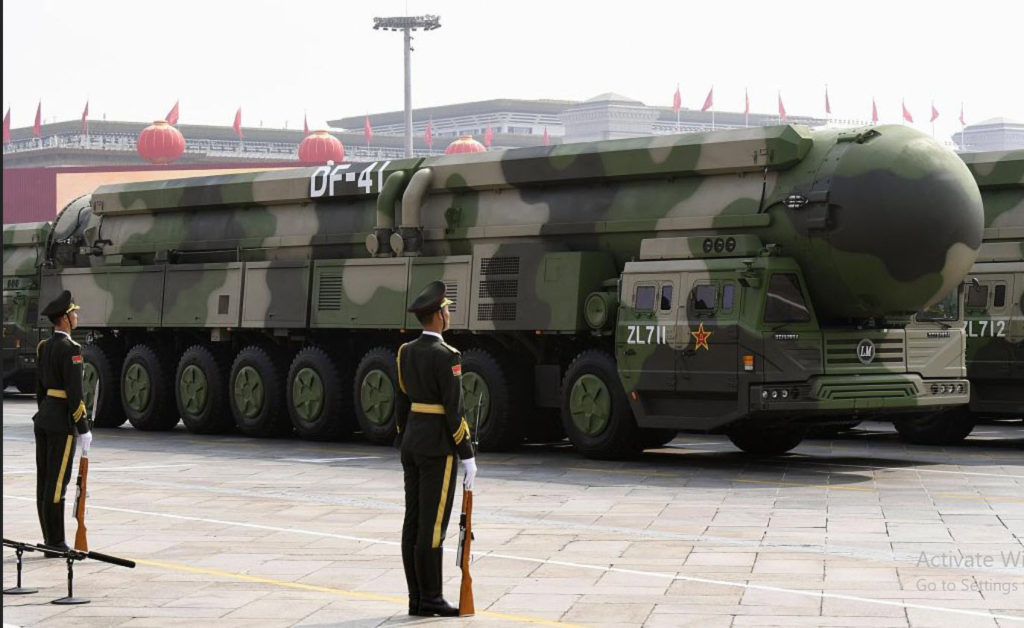
Ms. Cunningham seriously proposes that China gives such high priority to safeguarding against unauthorized nuclear use that their very costly ballistic missile submarine fleet may, in peacetime, carry no SLBMs.
- All of the Chinese boomer subs are empty of SLBM’s? Really?
Perhaps she means they would carry no SLBM nuclear warheads. In either case, this defies common sense as it would render useless China’s SSBN fleet as a deterrent against surprise attack.
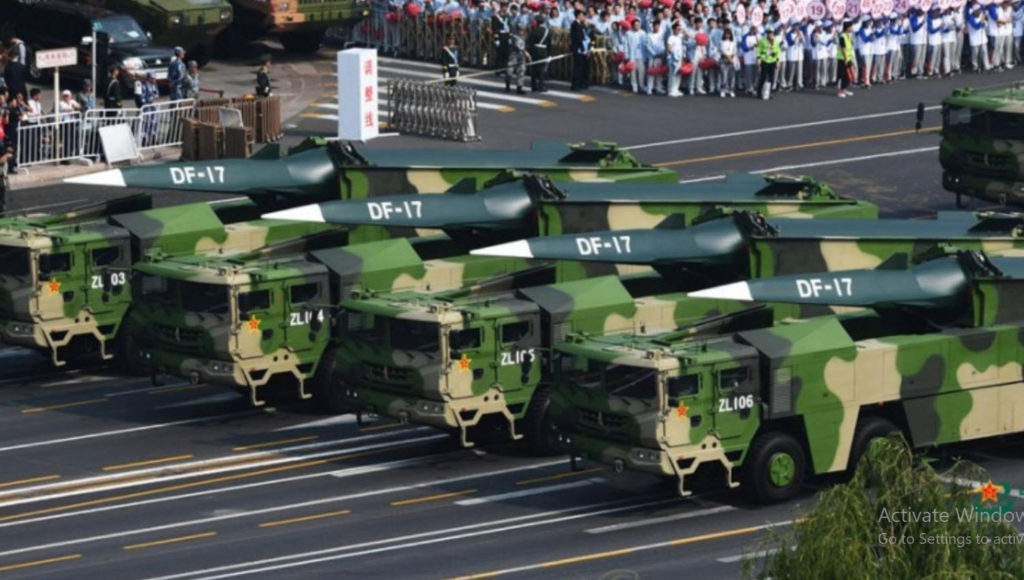
The SSBNs would also become an escalatory liability in a crisis or conflict, as the process of uploading missiles or warheads would be very lengthy, highly visible, and so provocative as to invite a disarming first strike.
Undoubtedly, China will operate its SSBNs in peacetime as they are being tested now — loaded for bear, with SLBMs armed with nuclear warheads aboard.

- For decades, Western analysts have almost certainly grossly underestimated China’s number of nuclear weapons as about 300 (compared to about 1,500 operational strategic nuclear weapons for the U.S. and Russia, or five times as many). This seems based more on wishful thinking than a realistic appraisal of China’s nuclear capabilities.
Russian Gen. Viktor Yesin, former commander in chief of the Strategic Rocket Forces, provided a more realistic estimate of China’s nuclear capabilities in an article published seven years ago “Third After the United States and Russia: On China’s Nuclear Capabilities Without Understatement or Exaggeration” (April 30, 2012).
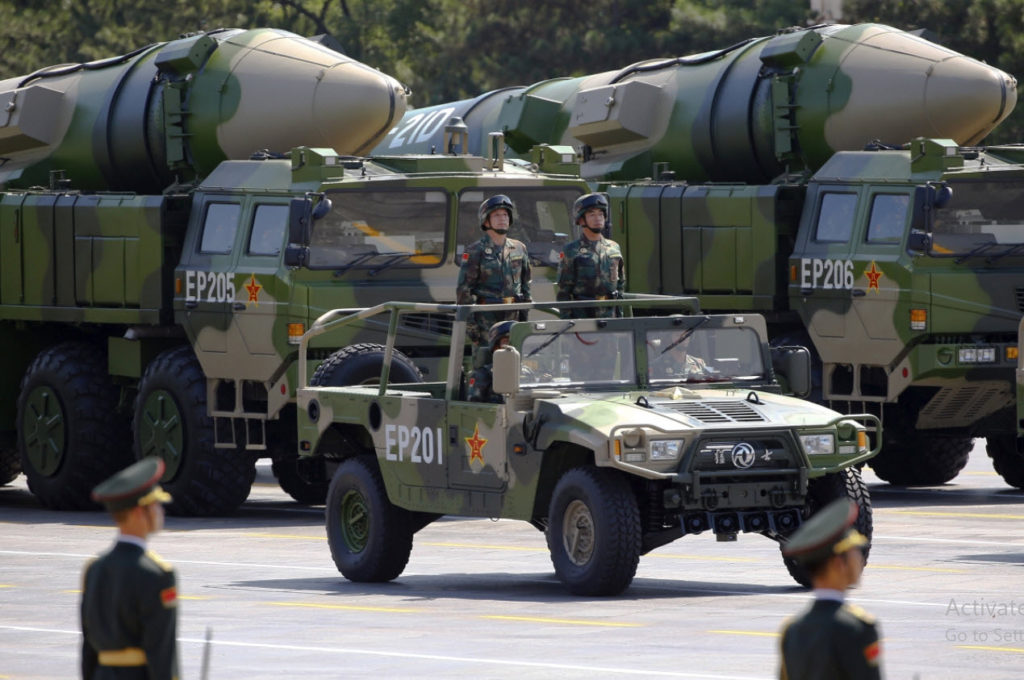
Gen. Yesin calculates China could have “10,000 nuclear munitions” based on the PRC’s estimated production of “up to 40 tons of weapons uranium” and “about 10 tons of weapons-grade plutonium” manufactured “as of 2011.”
However, based on China’s strategic and tactical delivery systems, Gen. Yesin concludes “there may be up to 1,800 warheads in China’s nuclear arsenal.”

Contrary to the title of Gen. Yesin’s article, this would make China, with 1,800 strategic and tactical nuclear weapons, the second most heavily armed nuclear power, after Russia (3,500 operational strategic and tactical nuclear weapons) but before the U.S. (1,700 strategic and tactical nuclear weapons).
“China’s nuclear capabilities are clearly underestimated… significantly higher than commonly believed in the Western expert community,” - concludes Russian Gen. Yesin.
As the New Cold War heats up in the Pacific — the United States had better not bet its security on China’s “No First Use” pledge and a presumed five-to-one U.S. advantage in nuclear weapons.
This story was originally published here. Dr. Peter Vincent Pry served as chief of staff of the congressional EMP Commission and in the CIA.
Well some sanity…
I have to agree. All the assumptions made by American planners are really ignorant. Ignorant of the facts, ignorant of China, ignorant of history, ignorant of Intel, ignorant of American weapons capability, and shrouded in wishful thinking, greed, psychopathic personalities, visions of grandeur and illusions.
So maybe some of this is starting to filter out to the American mindless masses…
The following article [3] discusses neocon war-mongering religious nutcase Arkansas Senator Tom Cotton and his slow realization that maybe now is not the time to fight China….
…yeah, Ya don’t think?
He is being discussed on FOX News which is the Alt-Right conservative “news” media that spouts the government point of view to appeal to American conservatives.
[3] US Senator Cotton Casts Doubt on US Navy’s Ability to ‘Fight and Defeat’ China
© REUTERS / OCTAVIO JONES
by Daria Bedenko – https://sputniknews.com/us/202107141083380272-us-senator-cotton-casts-doubt-on-us-navys-ability-to-fight-and-defeat-china/
The US military has seen criticism from lawmakers in the recent past: for example, Republican Senator Ted Cruz happened to share a video comparing the American army and the Russian Army, suggesting that the American military is “woke” and “emasculated”.
Republican US Senator Tom Cotton in a Tuesday interview to Fox News voiced doubt about whether the US Navy is capable of defeating China in battle, pointing at how the American military has, in his opinion, shifted away from warfighting.
"Obviously, the Navy has a big and complex task, but the single most important thing we have our surface Navy for is to be ready to fight and defeat the Chinese Navy",
Cotton said.
"And right now, I have real problems -- real doubts – the Navy has instilled the kind of warfighting mentality that would allow us to accomplish that goal."
He also referred to a recent military report delivered to members of Congress that, according to Cotton’s earlier statement,
"found that a staggering 94% of sailors interviewed believe that the surface Navy suffers from a crisis of leadership and culture."
"It's coming from sailors, it's coming from the sailors and their chiefs and their junior officers, and in some cases, commanding officers who have lost confidence that the Navy's surface warfare component is ready to fight and win tonight",
Cotton told Fox News.
The senator asserted that the United States
"allowed China to steal a march on us that relates especially shipbuilding",
pointing at a
"massive shipbuilding campaign"
by Beijing and suggesting that Washington should follow their lead. He also said that changes are needed in the way sailors and officers are trained, noting that, according to the military report,
"in some cases" the soldiers are handed DVDs to watch in their spare time to train."
"We would never do that to a Navy aviator, we would never do it to a Navy nuclear engineer", Cotton argued. "We shouldn't be doing it to our surface warfare officers either. They deserve a lot better, and the sailors they lead deserve a lot better as well."
The delivery of “A Report on the Fighting Culture of the United States Navy’s Surface Fleet” was ordered by Cotton and some of his House counterparts, including GOP Representatives Jim Banks, Dan Crenshaw, and Mike Gallagher.
This is not the first time Republican lawmakers have questioned the readiness of the American military, the world’s largest by a significant margin. Many conservatives blast the US military for being “woke” and “emasculated”, particularly Texas GOP Senator Ted Cruz, who shared a video in which he compared the US military with the Russian army.
Some observers have criticized the American military for their rollout of so-called ‘woke’ ad videos or offering Zodiac horoscopes for soldiers, arguing that the focus should be on professionalism and not sexual orientation, gender, race, or even astrological aspects.
The sentiment, however, does not appear to be shared by Defense Secretary Lloyd Austin, who noted in late May that he would not “lose one minute of sleep” over what Russia or China say about the US military, which he deemed “the best” in the world today.
Comments
It is time China established a naval base in Cuba. Then the Americans will retreat from the South China Sea
China sent one warship to the Coral Sea, then the Australian navy scurried back from the South China Sea
So, a trillion dollar per year "defense" budget and hundreds of military bases around the globe aren't enough. Interesting how Russia and China, who spend 10 times less and have only a few external bases between them scare the US so much. They not only defend their countries adequately, but are also major threats offensively for 10 times less than what the US spends. I suppose the US answer to this will be to increase spending and build more bases.
China's ships FAR outnumber fascist amerika's total number of ships that span all 7 seas....there is ABSOLUTELY NO WAY the fascists can compete versus China in a regional battle or even war.
pepa in reply toSy.Gunson.NZ
@Sy.Gunson.NZ, I'm afraid he's only saying this in a drive to increase the navy budget...
Translation we want more money. Oh and Mr. Austin since you are so confident wouldn't that mean that these countries do not actually pose a threat and we can stop bullying them?
That's what ALL Pentagon simulations + assessments etc. say....but the total demented fascist psychopathic Neocons give a *F*, they would rather scorch the earth than giving up their lunatic wet dream...the result of their 'American Exceptionalism' Braindamages + Delusions of Grandeur and they are keeping on looting robbing plundering the taxpayer country + society blind.
Truth is, that China has no real interest in fighting anybody, unless provoked. Watching USA hype itself up for war is like watching a kitten chasing its own tail
Major General Smedley Butler told the Senate Arms Committee in 1935 - that - WAR IS A RACKET. And saying - what Al Capon was trying to do in 3 districts in Chicago - He was doing it on 3 continents (Asia, Africa, and South America, plus Mexico) - for the western mafia corporations. And it hasn't change. Check out the movie - The Pentagon Wars. Plus the latest report from the U.S Air Force regarding the F-35 joint fighter jet: The F-35 $1.7 trillion project has failed to meet expectations. And lets not forget about the 911 BS event, when the Senate Arms Committee was investigating the Pentagon for misplacing $2.3 trillion in 1999 and $1.1 trillion in 2000, and interesting that The ARMY/NAVY Financial Analyst Office was the office destroyed on that day, just like World Trade Center Building #7. ------ Pull My Finger, cause it speaks the same BS language.
CHINA is building a base on the Moon. soon USA will have to retreat from space too
it is sure that the big mafia and its NATO dependencies lose ground geostrategically *** it is excellent news if the billionaires who reign in Washington and Brussels can no longer impose their particular interests on the whole of the planet *** the rise of states and the Russian and Chinese public sphere, geostrategically and economically is not conquering *** it simply allows cooperation and development to countries which were subject to plunder when they were under the yoke of organized crime in Washington and Brussels *** Russia and china bring peace
Terranianin reply toSy.Gunson.NZ
@Sy.Gunson.NZ, Russia will join them as well, as on their Space Station because the ISS reach their End-Of-Life... and in contrast to the US who blocked + excluded them from the ISS against the wishes of their partners, the Chinese welcome anyone to join them in cooperation as 'equals'. It's like with their ginormous FAST telescope, they literally invited scientist from all over the world and the US let their Arecibo telescope rot and decay and collapse because of neglect and ignorance.
It is ludicrous to even think that a mixed-race impoverished United States routed by Afghan tribesmen with rifles could offer any kind of threat other than bluster at a powerful armed to the teeth modern nation with a population at least 6 times greater than that of the US. What are those mulattos on?
hahhaha, the best in the world today? Defeated by Taliban with slingshot,
America. Military best in the world? Even the Taliban have defeated it and lost to the Vietnamese ragtag army. America can never defeat China or Russia in any war and they know that. The world will never support America and its allies in any with China or Russia.
Sure, the morons been living in a bubble believing they are invincible, which they are not. First lesson they have failed to learn from is that wars fought in far away places against indigenous people are unwinnable. China would be such far away theater and they just wouldn’t stand a chance!
After all its failed wars in the MiddleEast, and now being kicked out of Afghanistan, the Cowboys are now thinking of trying another war. This time they want to start a war in Asia, taking on the Chinese in their own backyard. Are these Cowboys nuts?
Don't you know that the Cabal is playing both sides: weakening the US and strengthening China, so that both may destroy each other and the Tribe rules?
Some Chinese Military Videos
I really do not know how much this can contribute tot he discussion, but I don’t think that it will hurt. Here’s some videos of Chinese military weapons and systems. I hope that they are interesting to you.
Download the video HERE.
And this one…
And the video HERE.
And this one…
And the video HERE.
And this video…
And the video HERE.
And here…

And the video HERE.
Conclusion
With every conceivable step pushing for war in place, it appears that the United States is starting to fall back and regain some sensibility.
It appears.
And I hope that it is true.
But if there is one thing that I do know, is that as nuts and crazy as the United States leadership are, they are crafty.
Crafty. Sneaky, Astute. Powerful. Dangerous.
And as an American I DO NOT TRUST THEM ONE BIT.
While it appears that the USA is pulling back from the brink of World War III, it just might just be another illusion. And instead, we could easily see a…
*** SNAP ***
And the entire world is engulfed in nuclear, flames, the worst biological weapons, and war on all theaters and in every conceivable way.
So…
Do not let your guard down.
Keep up on your affirmation prayers, and remain guarded and vigilant.
Final Thoughts
Keep in mind that America is a Police State domestically. A Military Empire Internationally. It’s government is an Oligarchy, and it’s people are dumbed down serf-slaves (roughly 60% serf / 25% felon slaves). The government controls everything inside of America, and wants to extend that reach internationally. This will not disappear, no matter what it appears to be.

America is not the leadership. There are good people, capable people, and still intact systems that are capable of designing, working and building things. The only problem is that the government is so big, is so enormous, that it controls everything, and makes it difficult to get anything done, and impossible to enact change.
America is changing, and the military forces are wearing new uniforms and new systems. They are being prepared to fight a major war. No matter what you read otherwise.

America has new weapons systems too. And is developing more every day, and they do look impressive.
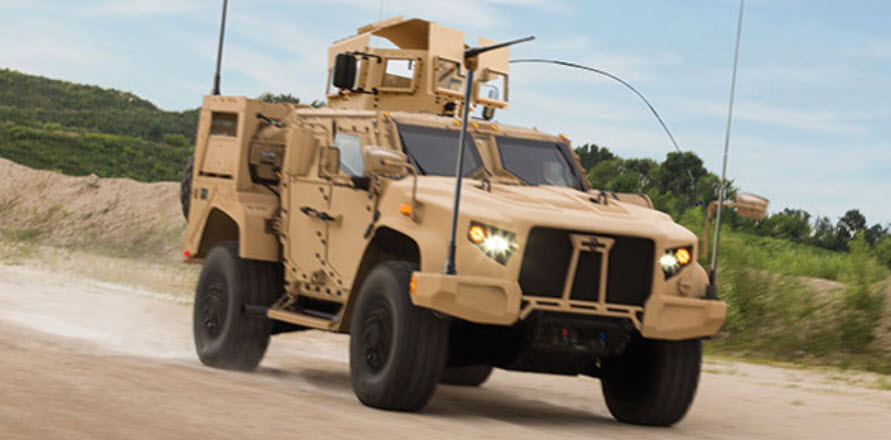
So with all this in mind, please take what ever you read in the American “news” cautiously. Be wary.
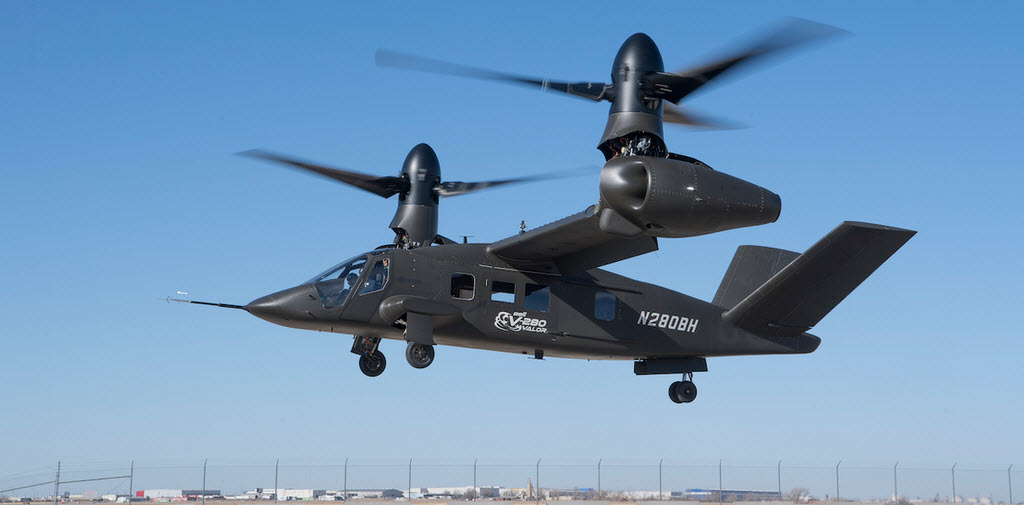
History has shown that the United States government lies, and is deceptive, and never moves away from it’s voracious appetite for power, control and domination. Never let up our guard.
And by the way, keep in mind that the American people are being manipulated and led by these psychopaths to behave in fearful and dangerous ways.
Check out this American woman, in Hong Kong of all places, yelling at a Chinese man. Telling him to get back to China “where you belong”. And he replies “You’re in China (now)”.
Full video HERE.
Do you want more?
You can find more articles related to this in my latest index; A New Beginning. And in it are elements of the old, some elements regarding the transition, and some elements that look towards the future.
New Beginnings.
Articles & Links
Master Index.
- You can start reading the articles by going HERE.
- You can visit the Index Page HERE to explore by article subject.
- You can also ask the author some questions. You can go HERE to find out how to go about this.
- You can find out more about the author HERE.
- If you have concerns or complaints, you can go HERE.
- If you want to make a donation, you can go HERE.




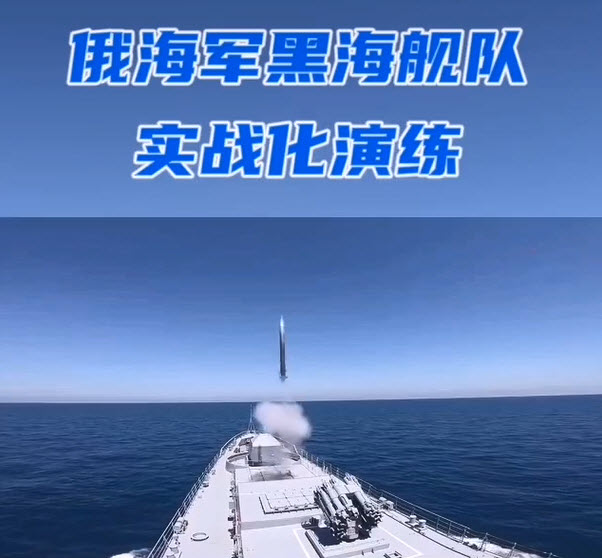

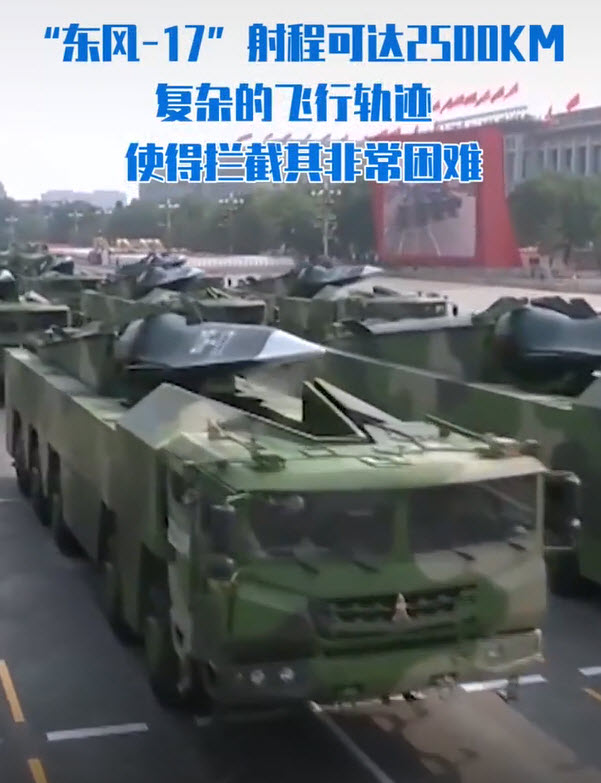
I just love all these comments purporting that “politicians” have any say in the matter.
They are ALL puppets of the unseen controllers.
These [“leadership”] dimwits are chosen, none elected, because they are… IDIOTS, or at least under the control of blackmail in one form or another (there is simple greed as well).
As to the financial state of the U.S.: ALL by design.
~~~
I love your Alien Interview series… hurry with 7.
https://www.globaltimes.cn/page/202107/1228730.shtml
All well and good…the TPTB are military and they can do as they
damn well please. Does the US have any actual $ left? I guess they
could steal more from the overweight TV watching public that is
apparently clueless. I don’t hate my fellow man, I like my quiet,
(mostly) friendly neighbors that largely mind their own business.
And mostly I like the countryside on my little swatch of land with
a tiny woods and wildlife bouncing around. I have 2 dogs…one old
and one still immature, and a just right kitty and there is a husband
that I enjoy spoiling and indulging…he, being a man does manly
things, like split wood. We have no time for TV and I prefer to eat
at home. There is a deadly virus don’t you know? I hear tell that
the “variants” cropping up are actually the side effects of those that
took the poke. Don’t know. What I would prefer to experience is
peace and cooperation among nations and health being promoted.
The best is for everyone to thrive and contribute to the whole…why
is that not happening?There are demons among us.
China is peaceful & not expansive. But it will protect its turf & its people’s interests, with determination & might.
I don’t think that America is pulling back from Asia at all.
If anything, America is trying to withdraw troops from the Middle East but only to deploy more of its war machine in Asia in preparation of an eventual world war against China.
Just the other day, a US military plane landed in Taiwan, which was a designed provocation to undermine the One China policy and further use Taiwan as a “stick” to poke at China…..
You are probably correct. I do not trust America and the West at all for any reason. Anything can happen in the next five years. Be frosty.
I work for a company that now has most of it’s accounts, even small factory and logistics facility in China. All of the upper and lower management and some hourly employees are ex military. But once military, always military, and they will get double dipped pensions. I’m of the opinion if any conflict occurs it will be staged and short lived. They keep the fear and the idea of war going to keep the trillions of dollars expenses in the budgets. Corporate America is tied to Corporate China in a huge way as if they are the same entity.
Too much money being made. Nobody is going to ruin that.
Another good read. TQ MM.
I dont think there will be much tears shed when this American Oligarchy empire finally falls. The entire world will be a safer place then.
Have not commented lately due to busy digesting the alien interview series.